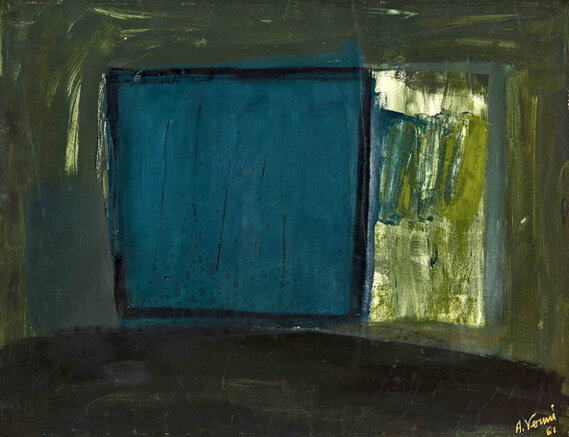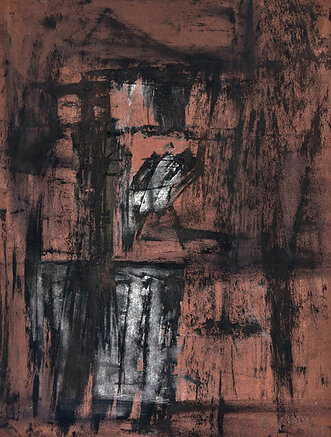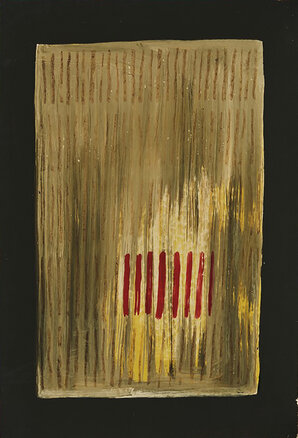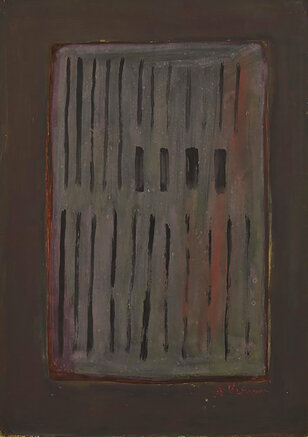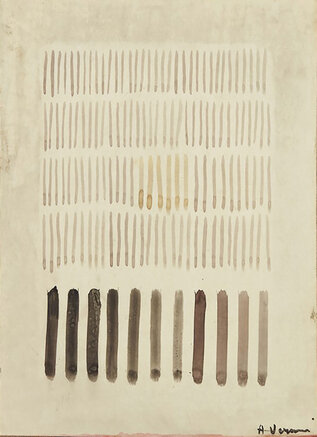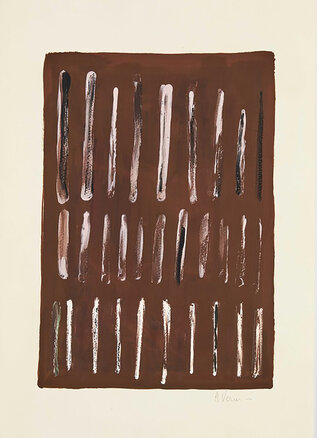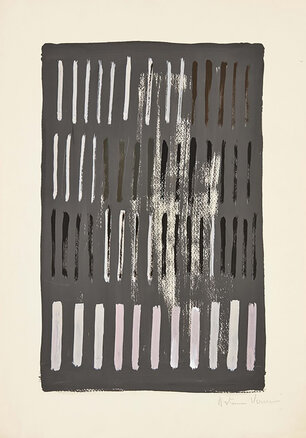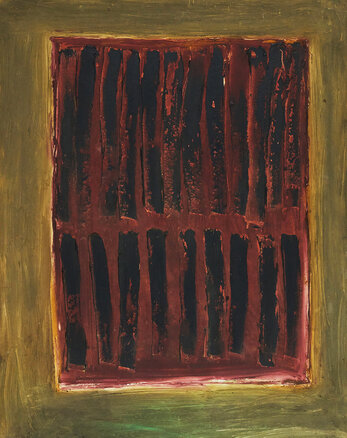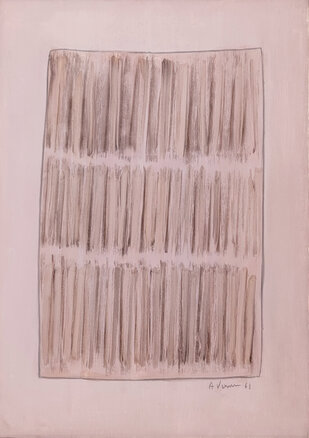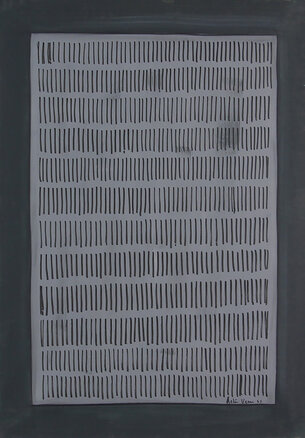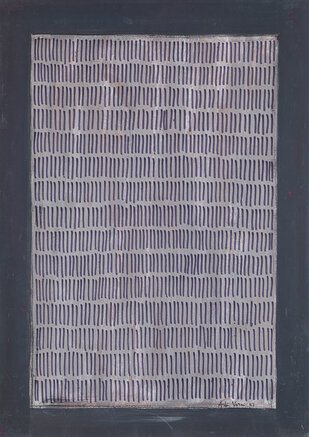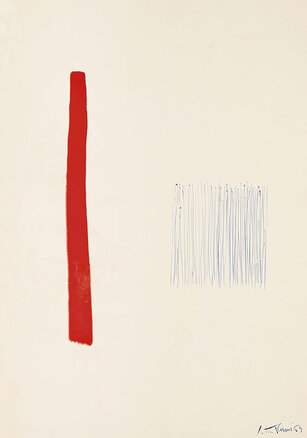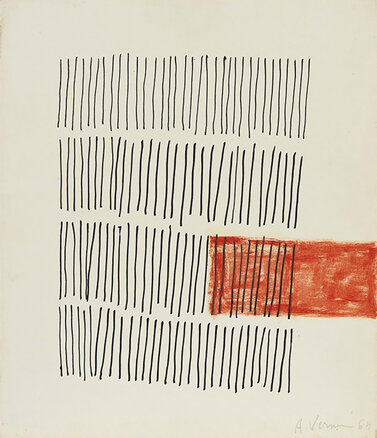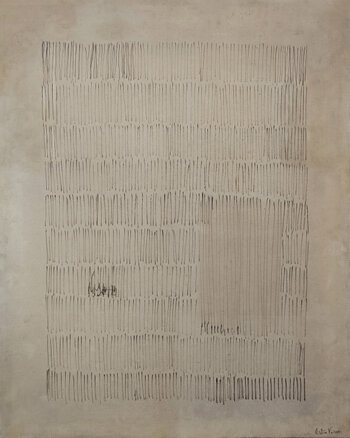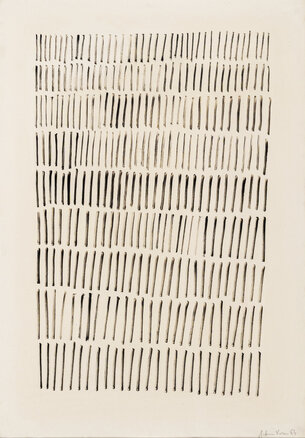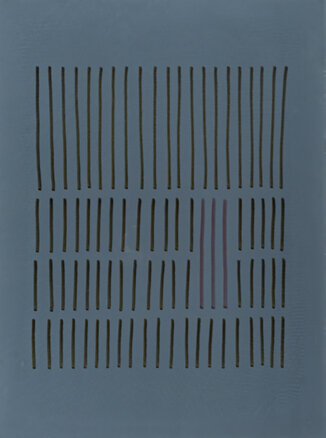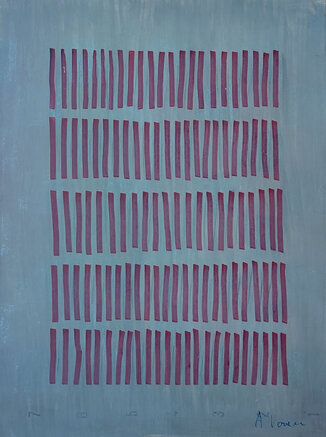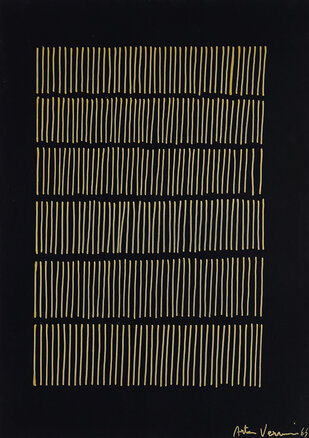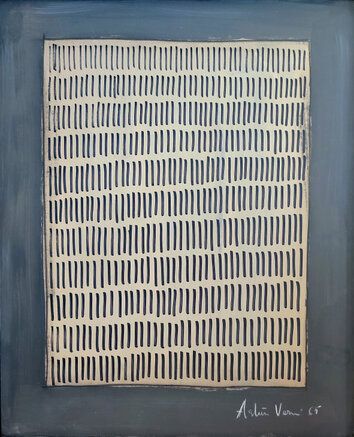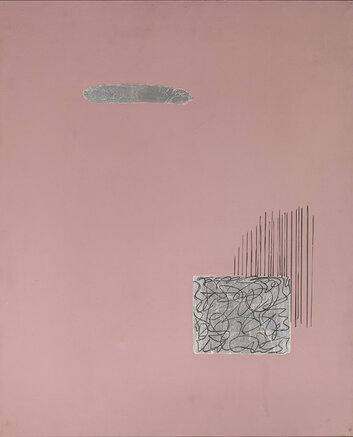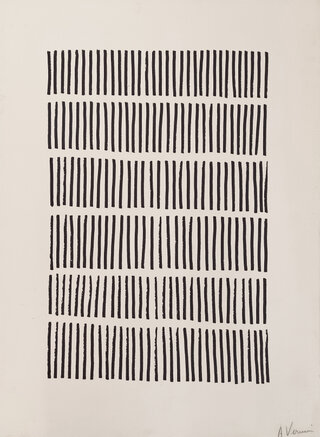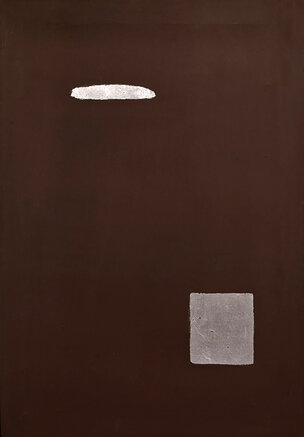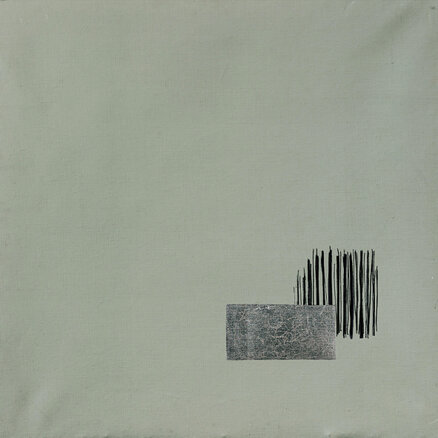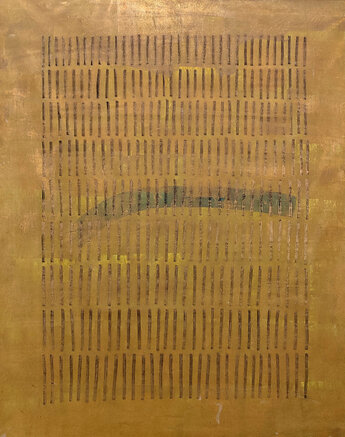ARTURO VERMI
Arturo Vermi was born in 1928 in Bergamo. Initially self-taught, his early paintings, dating back to 1950, show an affinity with German Expressionism. In 1956, after coming into contact with the innovative currents surrounding Milan’s Brera district, his work shifted towards an informal style. During this time, he met Costantino Guenzi. From 1959, he spent two years in Paris, attending various ateliers, particularly those of Luigi Guadagnucci, André Blok, Szabo, and Ossip Zadkine. There, he formed a close friendship with Beniamino Joppolo.In 1961, Vermi returned to Milan and, along with Ettore Sordini and Angelo Verga, co-founded the Gruppo del Cenobio, later joined by Agostino Ferrari, Alberto Lucia, and Ugo La Pietra. In 1964, he moved to the Quartiere delle Botteghe in Sesto San Giovanni, where, alongside other artists such as Agostino Bonalumi, Enrico Castellani, Carnà, Lino Marzulli, and Lino Tiné, he sought to integrate artistic experiences into everyday life. During this period, he began creating works like the Lavagne (Blackboards), Lapidi (Headstones), and his early Diari (Journals), which marked the beginning of his exploration of the sign — a theme that would define much of his later work. At the same time, he began a professional collaboration with architect Arturo Cadario.Vermi started exhibiting in some of Italy's most important galleries and prestigious spaces such as the Rotonda della Besana in Milan and the Palazzo delle Prigioni Vecchie in Venice. In 1967, he further explored the concept of space through his work with Lucio Fontana, a theme that would later influence his own artistic practice.
1975, which Vermi referred to as the "Lilit" year, was a turning point in both his personal and professional life. It marked the beginning of his exploration of happiness, leading to the publication of the first issue of Azzurro and the Manifesto del Disimpegno (Manifesto of Disengagement). In the same year, the Ministry of Education commissioned a documentary on his work for use in high schools. In 1978, he expanded on the themes in the Manifesto del Disimpegno, releasing a second issue of Azzurro during the Venice Biennale. That same year, he began working on a series of large canvases titled Com'era bella la Terra (How Beautiful the Earth).In 1980, he designed and engraved La Sequoia, a set of commandments that he later returned to Moses on Mount Sinai during a trip to Egypt with Antonio Paradiso and Nanda Vigo. Later that year, he focused on the I Colloqui (The Dialogues) series, which foreshadowed his forthcoming work L'Annologio, a piece centered on happiness. Arturo Vermi passed away on October 10, 1988, in Paderno d'Adda (Lecco).
Vermi’s renewed attention to the artistic research of the 1960s places him among the key figures in numerous exhibitions, including: Linee della ricerca artistica in Italia, 1960-1980 at the Palazzo delle Esposizioni, Rome (1981); Il segno della pittura e della scultura at the Palazzo della Permanente, Milan (1983); Pittura-Scrittura-Pittura (curated by Filiberto Menna) in Erice, Rome, and Suzzara (1987); Nel segno del segno, Dopo L'Informale (curated by Luciano Caramel) at Palazzo delle Stelline, Milan (2013); Nati nei '30. Milano e la generazione di Piero Manzoni (curated by Elena Pontiggia and Cristina Casero) at the Palazzo della Permanente, Milan (2014); Italia Moderna 1945-1975 (curated by Marco Meneguzzo) at Palazzo Buontalenti, Pistoia Museums, Pistoia (2019); Gruppo del Cenobio. Fontana, Manzoni and the Avant-Garde at Brun Fine Art, London (2019); and Arturo Vermi in the Space-Time Continuum at Brun Fine Art, London (2020). His works are held in major public and private collections, including the VAF Stiftung Foundation collection (Frankfurt am Main) and the Gallerie d’Italia collection of Banca Intesa (Milan).
The Catalogo Ragionato (Catalogue Raisonné) of the artist, published by Skira, is curated by Luciano Caramel.
→ 01 SENZA TITOLO, 1960,oil tempera on cardboard, cm 52,3x67,7
→ 02 SENZA TITOLO, 1960, mixed technique on cardboard, cm 29,4x22,2
→ 03 DIARIO, 1961, oil on canvas, cm 32,2x22,3
→ 04 SENZA TITOLO (DIARIO), 1961, tempera, gouache and graphite pencil on cardboard canvas, cm 50,1x35,6
→ 05 SENZA TITOLO (DIARIO), 1961, aniline on vellum paper inlaid, cm 49,2x35,7
→ 06 SENZA TITOLO (DIARIO), 1961/62, acrylic on canvas, cm 41,6x30
→ 07 DIARIO, 1961/62, acrylic on canvas, cm 48,9x34,6
→ 08 SENZA TITOLO, 1962, mixed technique on canvas, cm 100x80
→ 09 DIARIO, 1963, oil, tempera and pencil on cardboard canvas, cm 69,8x49,2
→ 10 DIARIO, 1963, oil and tempera on canvas board, cm 70x49,5
→ 11 DIARIO, 1963, oil and tempera on canvas board, cm 70x49,5
→ 12 PAESAGGIO, 1963, tempera and biro on cardboard, cm 49x35
→ 13 DIARIO, 1964, ink and oil on canvas, cm 28,4x24,4
→ 14 DIARIO, 1964, mixed technique (oil) on canvas, cm 100x80
→ 15 DIARIO, 1964, mixed technique (oil) on canvas, cm 100x70
→ 16 DIARIO, 1964,ixed technique on canvasa, cm 80x60
→ 17 DIARIO, 1964, tempera and felt-tip pen on canvas board, cm 49,7x37,2
→ 18 DIARIO, 1964, gold felt-tip pen on cardboard, cm 70x49,8
→ 19 DIARIO, 1965, oil and felt-tip pen on canvas, cm 43,5x35
→ 20 ED E' SUBITO SERA, 1965, mixed media and silver leaf on canvas, cm 60x50
→ 21 DIARIO, 1968, tempera on canvas, cm 75,5x55,5
→ 22 PAESAGGIO, 1968, mixed media and silver leaf on canvas, cm 70x50
→ 23 SENZA TITOLO (PAESAGGIO), S.D(1970s), mixed media and silver leaf on canvas, cm 80x80
→ 24 STORIA DELLA CHIESA, 1974, gold leaf and mixed media on canvas, cm 100x80


